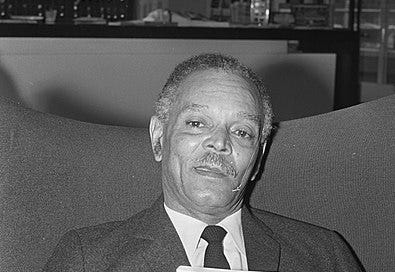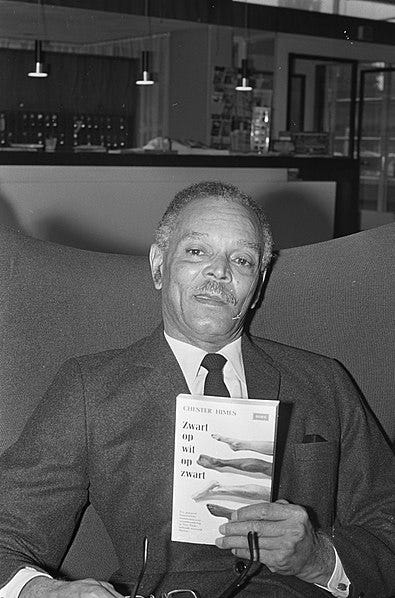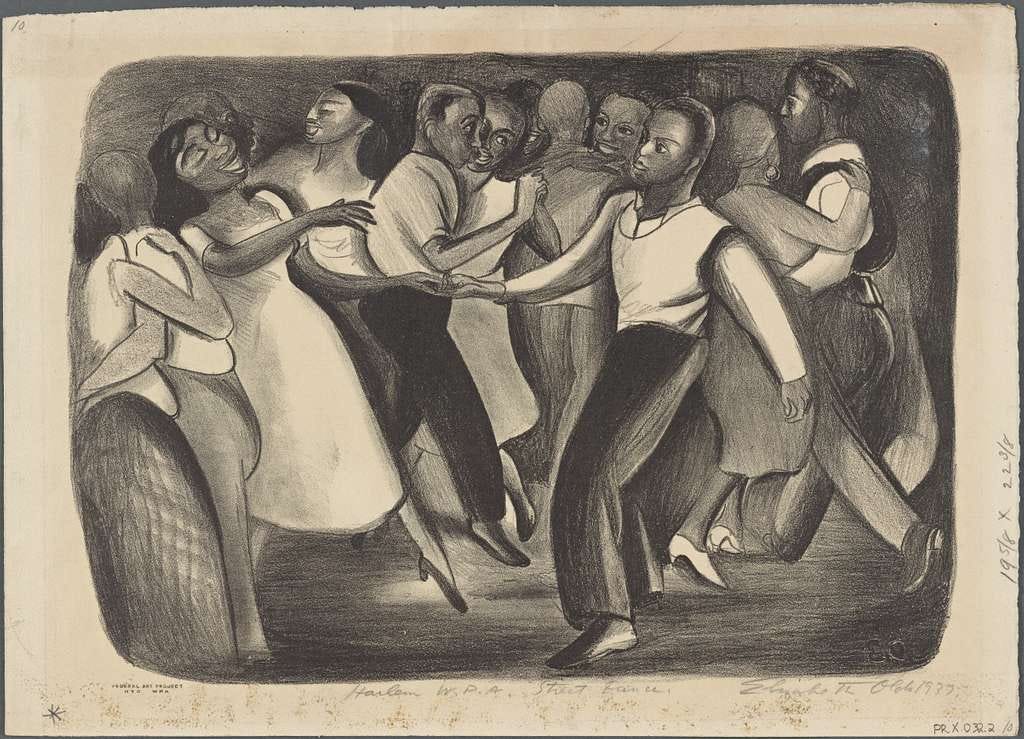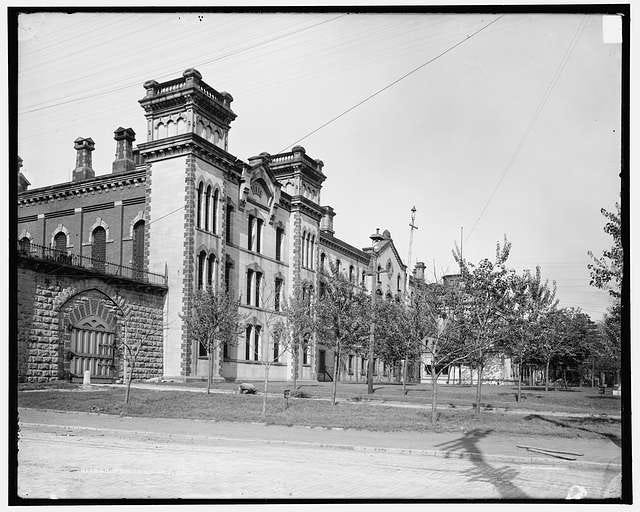The Brilliance of Chester Himes and The Harlem Detectives
Unbelievable acts of violence combined with tear-inducing bouts of absurdist comedy. A world in where a preacher falls from a window when he leans out too far watching a robbery, and an African man’s throat is cut in the grisliest of fashions, sending blood spraying everywhere.
This is the world of The Harlem Detectives. This is the world created by Chester Himes.
Don’t Call Him the “Black Raymond Chandler”
To call Chester Himes the “Black Raymond Chandler” is, I think, a disservice to the man. Because while influenced by the works of Chandler and Dashiell Hammet, Himes carved his own path, and in doing so, broke new ground.
The year was 1954. Hollywood was still almost exclusively an all-white industry. Himes himself had once written for Warner Brothers, until one of the head honchos decided that he didn’t want black writers working for him (he used worse language, but you get the gist).
Himes, whose life had already been fraught with difficulty and racism, was living in the less racist Paris, and although his novels were well-respected, they weren’t making him any money. A despondent Himes had no idea what to do, until one of the people who had popularized American detective fiction in France asked him to write a detective story.
Chester Himes replied that he did not know how. To which the editor told him to start with an outrageous incident and go from there.
(Hence a preacher falling out of the window in the opening of A Rage in Harlem.)
Thus, were born Grave Digger Jones and Coffin Ed Johnson, two of the toughest, meanest black detectives on the NYPD. Known – and feared – throughout Harlem, the two would blaze a trail through their world and ours.
While Digger and Coffin Ed never hurt an innocent person, Lord help you if you were a pimp, pusher, junkie, or violent criminal, because the Harlem Detectives would make sure you got what was coming to you.
And it would be another thirty or so years before Walter Mosley would give us another stand-out detective series with a black hero, Easy Rawlings, leaving the Harlem Detectives to do a lot of the heavy lifting when it came to positive depictions of African Americans in detective fiction.
But just what makes Chester Himes’ work still resonate today when a ton of other African American fiction pioneers have been forgotten?
The Storied Life of Chester Himes
Himes is a classic example of “writing what you know”. His life is the reason that the world of the Harlem Detectives feels so incredibly real that you can almost feel the grit coming off the pages.
By 19, Himes had survived an abusive and terrible homelife, was blaming himself for the blinding of his brother, had made his way through the underworld of drugs, pimps, pushers, and gamblers, and had even survived a forty-foot fall down an elevator shaft that left him in immense pain for the rest of his life.
But the struggles weren’t over for him. He’d have to endure eight years in state prison, being exposed to levels of violence and depravity that would still shock people today.
Himes’ early novels would lead to acclaim, racist attacks, and then indifference from an America that did not want to know about the nasty secrets of poverty and prejudice bubbling away beneath its pristine 50s sheen of prosperity.
And while there was indifference to his work from the general public and the press, the racial prejudice would continue unabated for the rest of Chester Himes’ life.
His time in prison was especially bad. He would detail his experiences in Cast the First Stone, written in 1952 but not published until ten years afterwards, its contents considered “too shocking” for a white public still getting use to actors kissing each other on-screen.
The violence and brutality would be on full display in the Harlem Detective novels, as lives are cut short in the blink of an eye, or an albino giant is beaten half to death by white firemen.
But the comedy would also come from prison, because life is like that. There is no overarching logic to its progression. No simple cause and effect, so prevalent in our movies and stories.
There is just shocking violence one minute. Followed by slapstick comedy the next. Nobody is safe from the whims of fate and the universe, be they good or bad. There are no guarantees in Digger and Coffin Ed’s world, just like there are none in ours.
The fiction of Chester Himes took elements from a life fuller of hardship than many others, and it also took pieces of a life more fascinating than almost anyone you’re likely to hear about. It was then put in a blender to create a concoction so insanely outrageous, yet so real, that many other works by very talented writers have failed to measure up.
And inhabiting this amazing world that Chester Himes created were the two most interesting anti-heroes to come out of crime fiction.
The Sublime Brilliance of Grave Digger Jones and Coffin Ed Johnson, The Harlem Detectives
Racial prejudice. Violence. Injustice. Death. Depravity.
And through it all stride Digger Jones and Coffin Ed, trying – sometimes in vain – to restore order to a world that has been designed to oppress people with skin like theirs.
Stride is the right word, too, for Digger and Ed are elevated to legendary status in their world. People whisper their names in hushed tones. Violent criminals flee from their approach. In Harlem, they are akin to the western gunfighters of old – living, breathing myths.
And everyone in Harlem knows that they are ready to dish out their own brand of The Man’s justice to anyone they think deserving of it. Whether it requires torture, brutality, or any other means, they will use it to ensure that they get what they need.
One time they threaten to pistol-whip a woman for not answering their questions. Another has them holding a razor at another woman’s neck to get information vital to solving the case of a child who was the victim of a brutal attack.
And much like the police officers who did violence upon suspects at the time, they would always get away with it, because Grave Digger Jones and Coffin Ed would always solve the case, or the victim of their brutality would turn out to have done even worse things.
Chester Himes himself would say that “they never came down hard on anybody that was in the right".
Somehow, Himes would keep your sympathy on the side of the Harlem Detectives throughout, because whatever bad things they did, they were doing it to stop something even worse from happening to an innocent person. It is much the same as Jack Reacher in Lee Child’s series of books, who will kill or torture to get justice for those that have been wronged.
Coffin Ed and Digger are also deeply sympathetic for the victims they come across. In fact, they are sometimes the only ones who care, especially when the victims are black. And at multiple points throughout the series, the Harlem Detectives will end up protecting black people from the senseless cruelty of white police officers.
Being the only two black cops in their precinct, they themselves are constant victims of prejudice. Chester Himes constantly reminds us that although the two are police officers, their skin color puts them at the bottom of the ladder in their own profession.
The Harlem Detectives not only have to fight external forces, but internal ones as well, their struggle to get justice never-ending and ceaseless, even if they must put their reputations, lives, and jobs on the line to get that justice.
All of this combines to create two characters that walk a very fine line between sympathetic and unlikeable. Between good and evil. Reminding us that the world is never as easy as black and white.
What We Can Learn from Chester Himes and his Harlem Detectives
If you’ve not been convinced to check out the work of Chester Himes, who is one of my greatest influences in creating my Duke Gibbs, then you are doing yourself a disservice.
To read the Harlem Detectives is to immerse yourself in a world so real that you can smell the garbage burning on the corner. It is to become engrossed in a series of stories that run the gambit from funny to tragic, from satisfying to melancholy, and everything in-between.
And most of all, it is a place where we are reminded that good and evil aren’t always that easy to tell apart.







